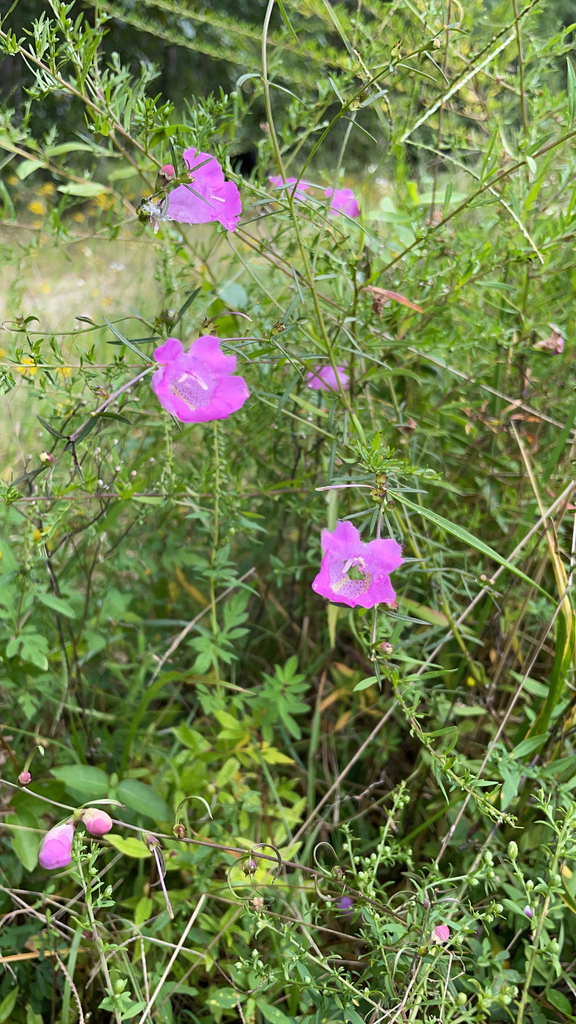
Agalinis purpurea (known by common names including purple false foxglove and purple gerardia) is an annual forb native to the eastern United States and Canada, which produces purple flowers in late summer or early fall.

Agalinis purpurea (known by common names including purple false foxglove and purple gerardia) is an annual forb native to the eastern United States and Canada, which produces purple flowers in late summer or early fall.
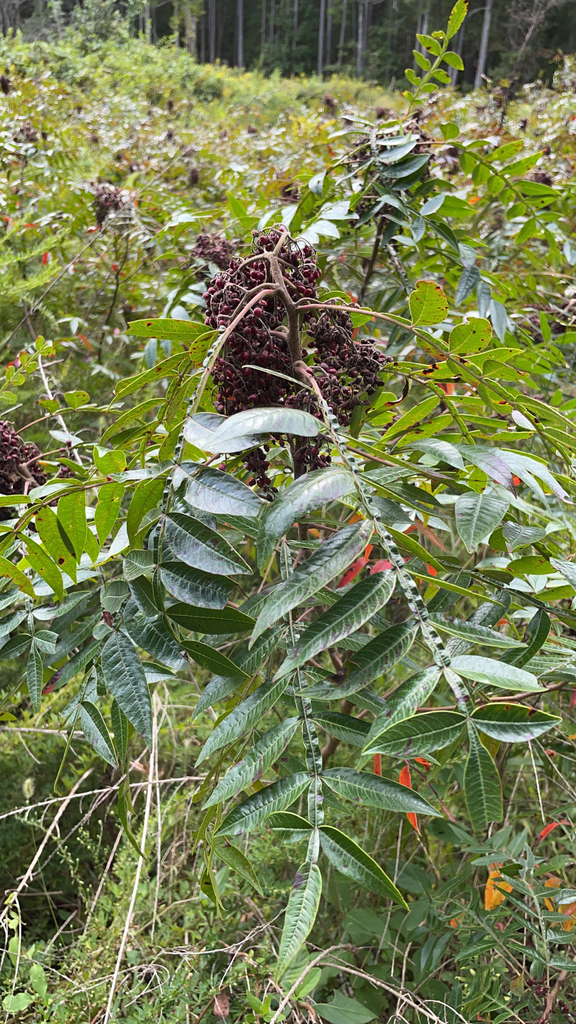
Rhus copallinum (Rhus copallina is also used but, this is not consistent with the rules of the International Association for Plant Taxonomy), the winged sumac, shining sumac, dwarf sumac or flameleaf sumac, is a species of flowering plant in the cashew family (Anacardiaceae) that is native to eastern North America. It is a deciduous tree growing to 3.5–5.5 metres (11–18 ft) tall and an equal spread with a rounded crown. A 5-year-old sapling will st
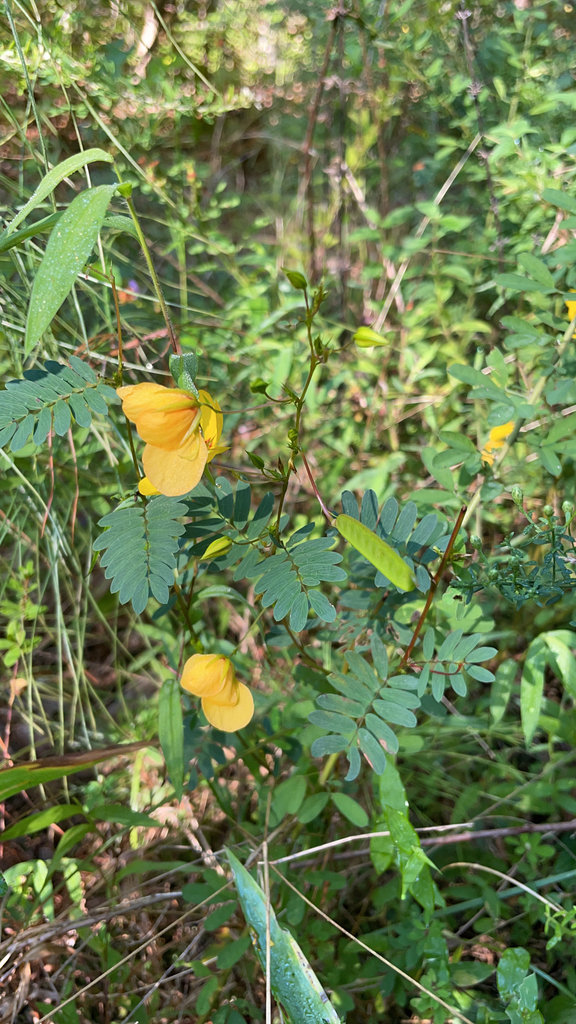
Chamaecrista fasciculata, the partridge pea, is a species of legume native to most of the eastern United States. It is an annual which grows to approximately 0.5 meters tall. It has bright yellow flowers from early summer until first frost, with flowers through the entire flowering season if rainfall is sufficient.

Lobelia puberula, or downy lobelia, is a perennial herbaceous wildflower in the Bellflower family (Campanulaceae) native to eastern and south central United States. It is the most common blue-flowered Lobelia in the Southeast. It grows in mesic (moderate moisture) to hydric (moist) habitats in sun or partial shade.
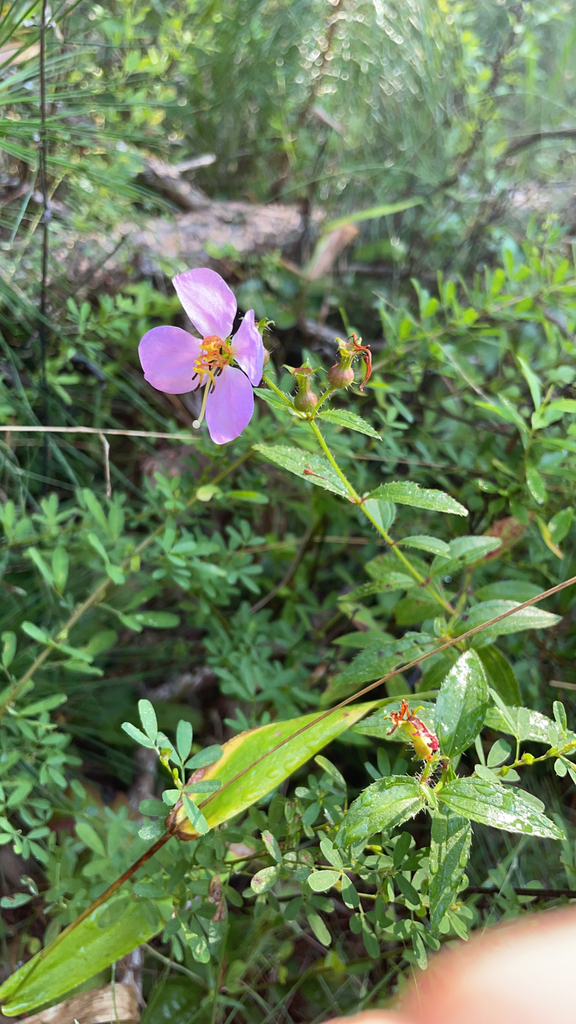
Rhexia mariana is a species of flowering plant in the Melastomataceae known by the common name Maryland meadowbeauty. It is native to the eastern and lower midwestern United States.

Hortiboletus rubellus, commonly known as the ruby bolete, is a small, dainty, brightly coloured member of the family Boletaceae, with a reddish cap and stipe, and yellow pores. Like many boletes, it stains blue when cut or bruised. It is found in deciduous woodland in autumn. There is some question over its edibility, and it is reportedly of poor quality with a taste of soap. Until 2015, the species was known as Boletus rubellus.
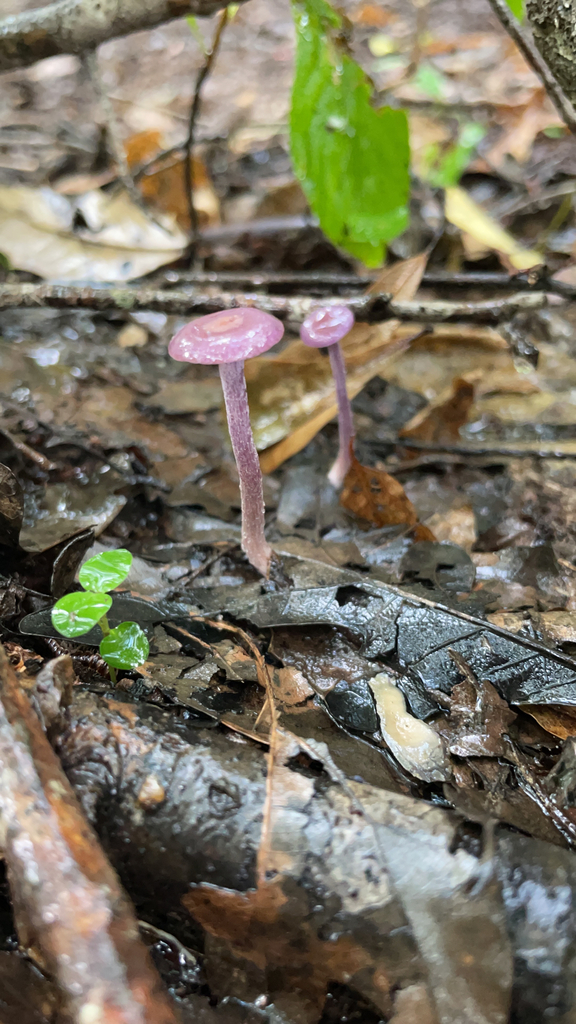
Laccaria amethystina, commonly known as the amethyst deceiver, is a small brightly colored mushroom, that grows in deciduous as well as coniferous forests. The mushroom itself is edible, but can absorb arsenic from the soil. Because its bright amethyst coloration fades with age and weathering, it becomes difficult to identify, hence the common name ‘Deceiver’. This common name is shared with its close relation Laccaria laccata that also fades and weathers. It is found
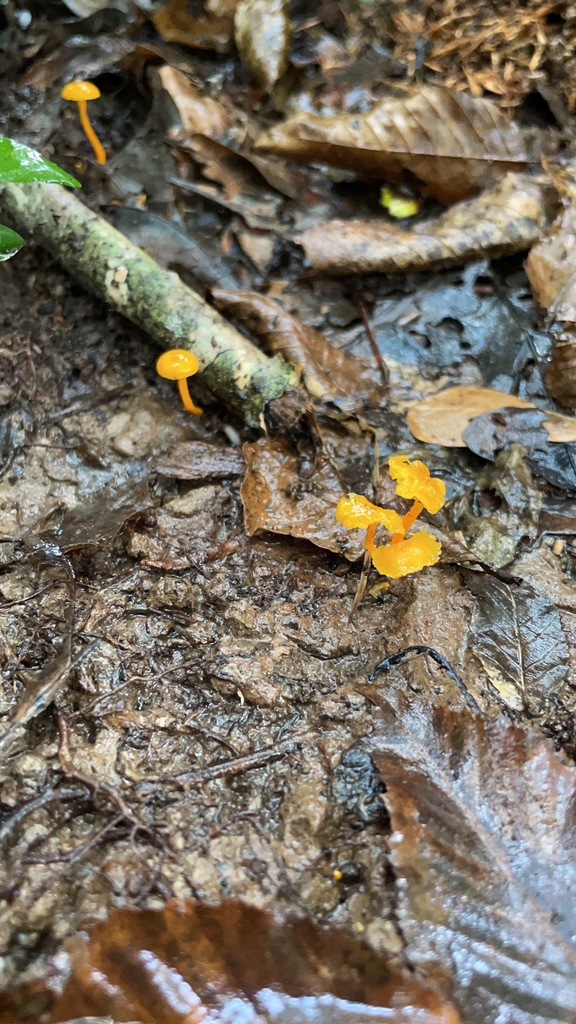
Cantharellus minor is a fungus native to eastern North America. It is one of the smallest of the genus Cantharellus, which includes other edible chanterelles. It is suspected of being mycorrhizal, found in association with oaks and moss. Recently, C. minor has been reported from semi-evergreen to evergreen forests in the Western Ghats, Kerala, India forming ectomycorrhizal associations with tree species like Vateria indica, Diospyros malabarica, Hopea
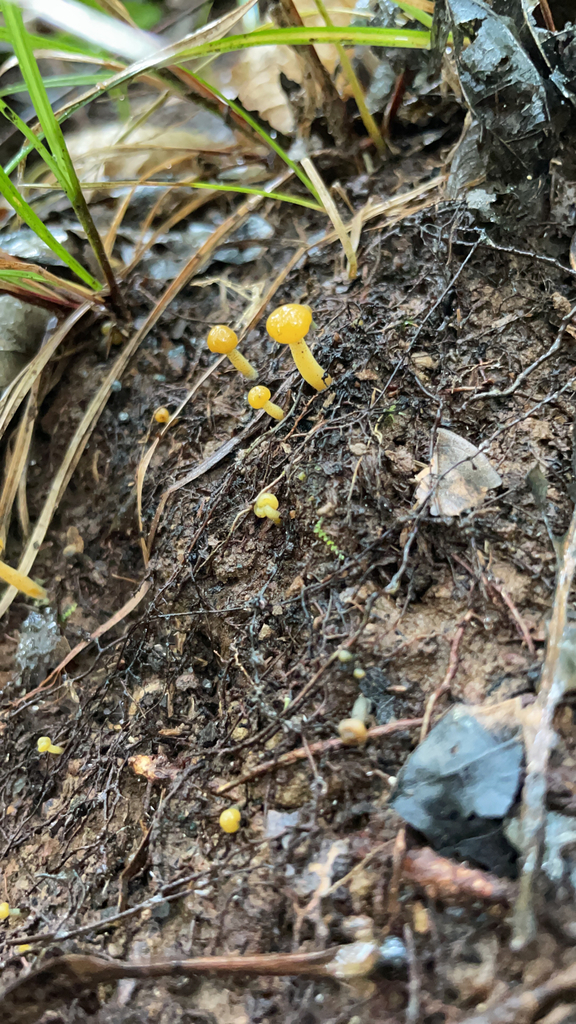
Leotia lubrica, commonly referred to as a jelly baby, is a species of fungus in the family Leotiaceae. The species produces small fruit bodies up to 6 centimetres (2.4 in) in height, featuring a “head” and a stalk. Ochre with tints of olive-green, the heads are irregularly shaped, while the stalk, of a similar colour, attaches them to the ground. The appearance can be somewhat variable and is similar to a number of other species, including Cudonia…
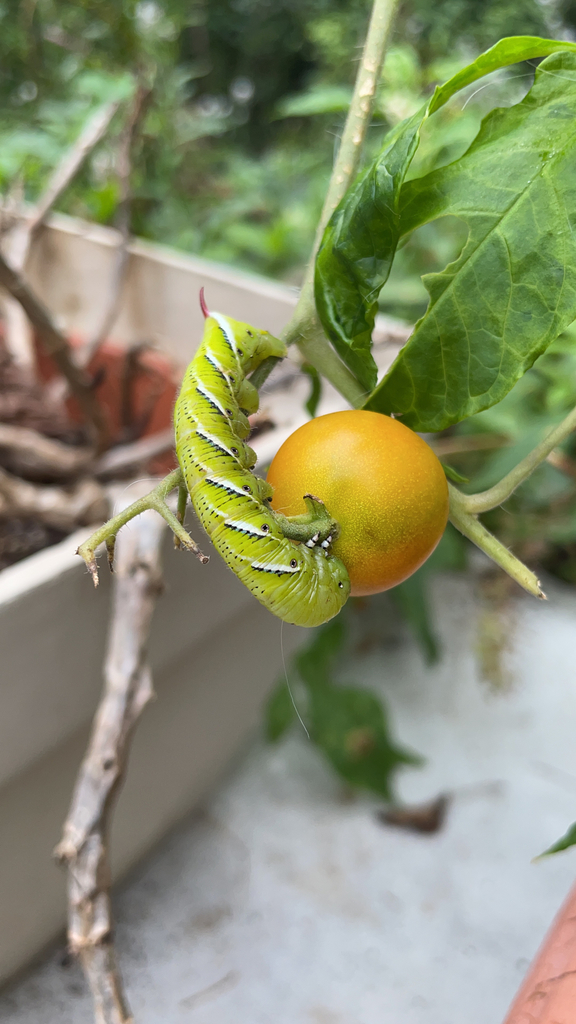
Manduca sexta is a moth of the family Sphingidae present through much of the American continent.
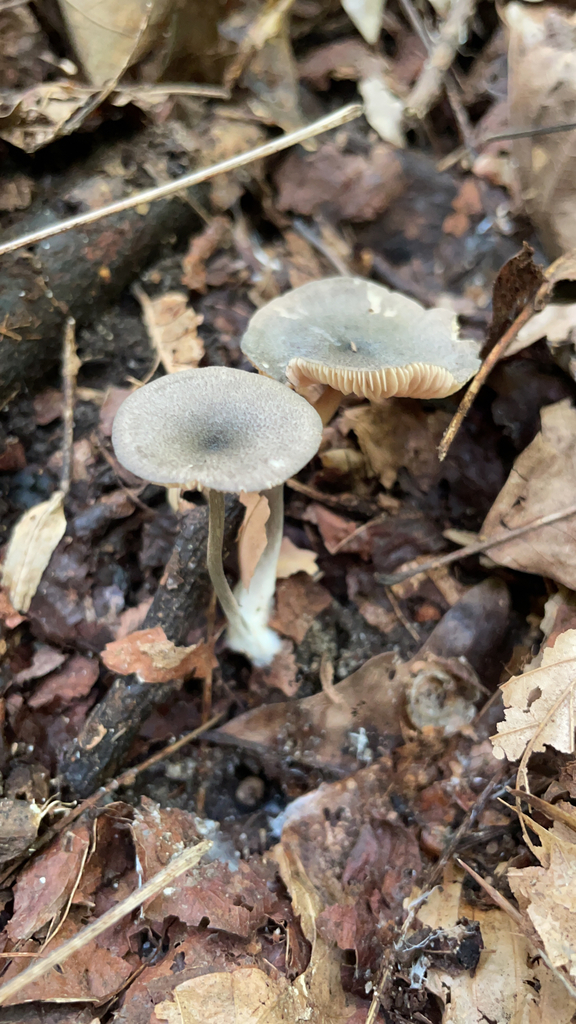
Pseudoclitocybe cyathiformis, commonly known as the goblet funnel cap, is a species of fungus in the Tricholomataceae family, and the type species of the genus Pseudoclitocybe. It was first described scientifically as Agaricus cyathiformis by Jean Baptiste François Pierre Bulliard in 1786, and later transferred to the genus Pseudoclitocybe by Rolf Singer in 1956. The fungus is found in North America and Europe.